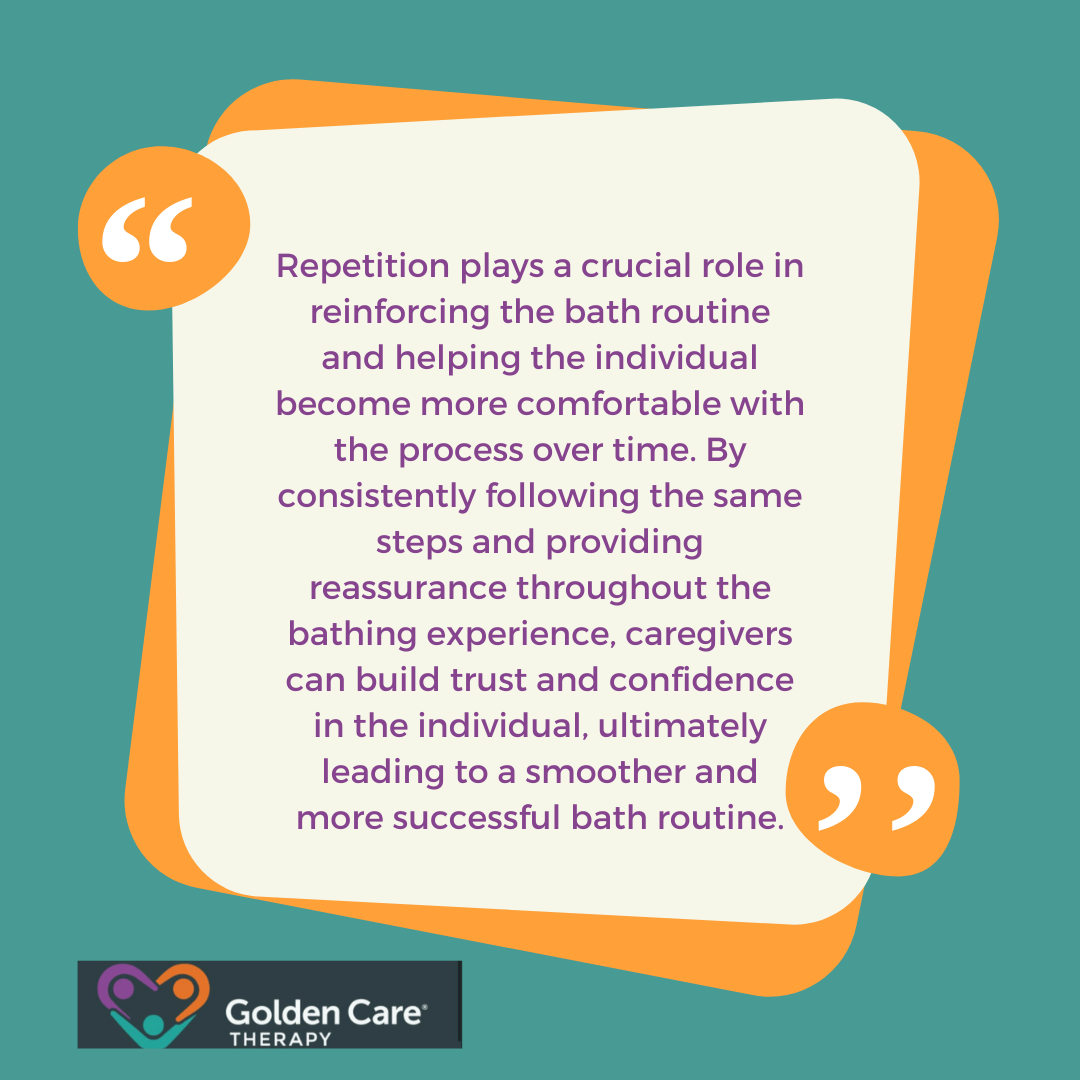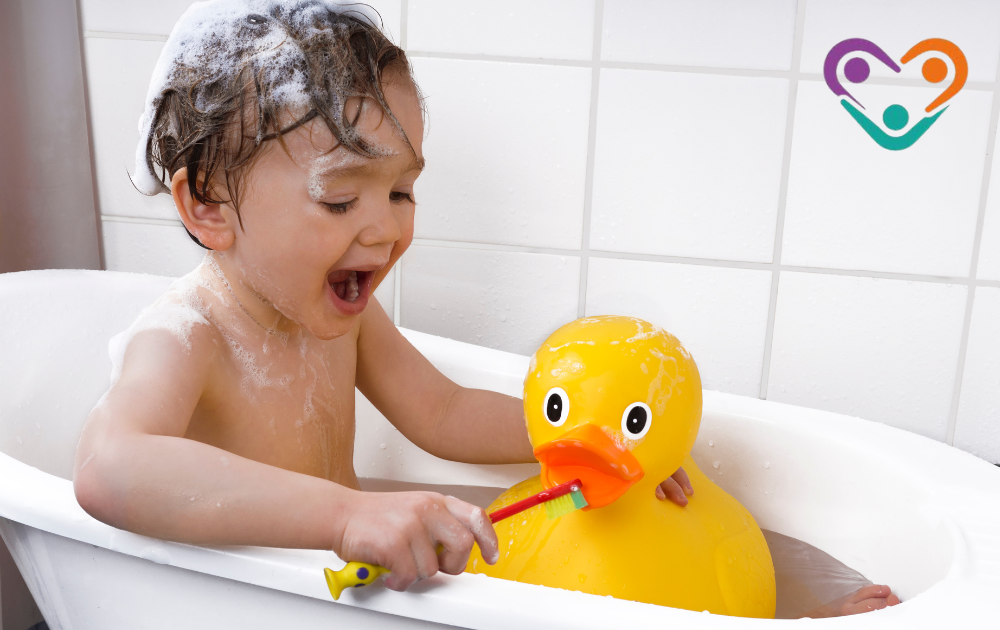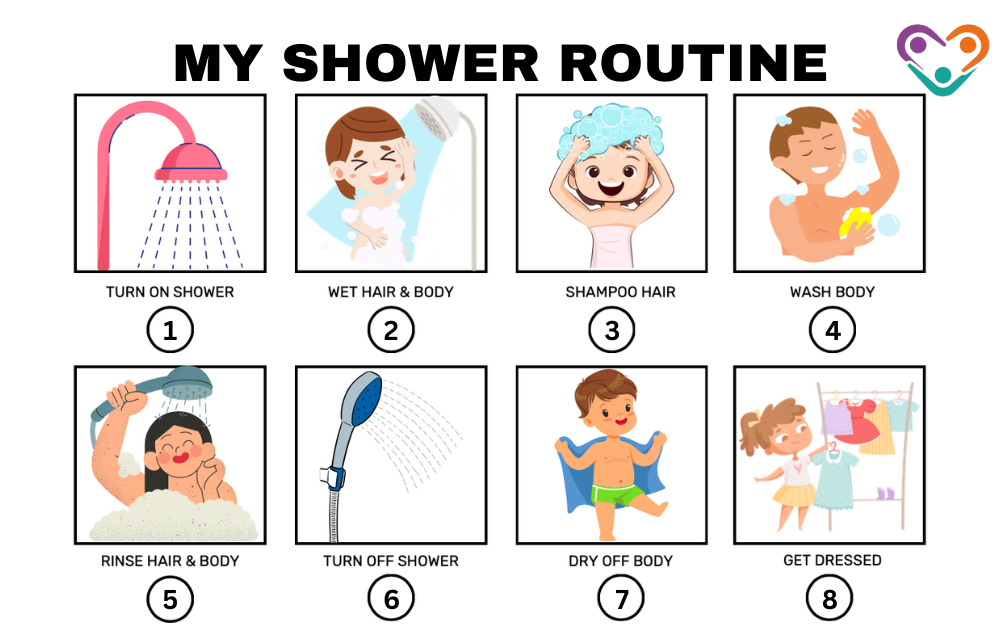
Table of Contents
Showering can be a complex task for individuals with autism, as it involves multiple steps that require focus and coordination. The shower sequence may be challenging because it requires understanding routines, managing sensory experiences, and handling transitions between each step.
For someone on the autism spectrum, these steps can feel overwhelming, leading to frustration or confusion.
Understanding why showering might be difficult and exploring ways to create a more supportive environment can make this daily routine more manageable and less stressful.
Observation and Experimentation
Observation is a fundamental aspect of understanding how a child with autism reacts to different approaches during bath time. By engaging in conversations with them and paying close attention to their body language, caregivers can identify effective methods that help the individual feel comfortable and secure during the bathing process.
Experimentation is equally important in discovering the strategies that work best for each individual.
Trying out various techniques, such as adjusting water temperature, using sensory-friendly products, or incorporating visual cues, can provide valuable insights into what promotes a positive bathing experience for the individual.
Consistency and Repetition
Consistency and repetition are key elements in establishing a successful bath routine for individuals with autism. Maintaining a consistent approach to bath time, including using the same sequence of steps and ensuring a familiar environment, can help reduce anxiety and enhance predictability for the individual.

Incorporating these aspects of observation, experimentation, consistency, and repetition into bath time routines for individuals with autism can create a supportive and structured environment that promotes feelings of security and well-being during this essential daily activity.
Importance of Visual Schedules
The importance of visual schedules can’t be understated, especially when it comes to shower sequences. Visual tools play a pivotal role in aiding individuals in understanding and following the steps involved in a shower routine.
These tools provide a clear, structured visual representation of each step, making the process more predictable and easier to comprehend for individuals with autism.
The use of visual aids helps in reducing anxiety, improving comprehension, and promoting independence during shower time.
One significant benefit of utilizing visual tools is that they can be personalized to suit the individual’s needs and preferences. Customized visual schedules can include specific images, colors, and formats that resonate with the individual, enhancing their engagement and understanding of the shower sequence.
Visual schedules not only aid in organizing the shower routine but also enable gradual independence building for individuals with autism. By initially demonstrating and guiding the individual through each step of the shower sequence, caregivers can gradually transfer responsibility to the individual, fostering self-reliance and confidence.
Through incremental learning, individuals can progress from requiring full assistance to independently managing their shower routine. This incremental approach promotes skill development, autonomy, and a sense of accomplishment for individuals with autism.
Furthermore, caregivers can track the individual’s progress and success in completing the shower routine over time using visual scheduling applications like Goally. By monitoring performance metrics and identifying areas for improvement, caregivers can provide targeted support and encouragement to facilitate continuous growth and independence in shower sequences.
Strategies for Success
Implementing successful shower sequences for individuals with autism requires a personalized approach tailored to the specific needs of each person. Additionally, parents and caregivers need to recognize and accept setbacks as part of the learning process without becoming discouraged.

Individualized Approaches
Creating effective bath routines for individuals with autism involves recognizing that each person is unique, and what works for one individual may not work for another. It is essential to take into account the sensory sensitivities and preferences of the individual when developing a shower sequence.
Customizing the routine to suit their needs helps caregivers make bath time a more comfortable and enjoyable experience.
These visual tools break down the shower sequence into simple, easy-to-follow steps, helping individuals with autism understand and navigate the routine more independently. By gradually increasing the individual’s involvement in each step, caregivers can promote a sense of accomplishment and foster greater independence over time.
Embracing Setbacks
Setbacks are a natural part of the learning process when establishing new routines for individuals with autism. Caregivers need to approach setbacks with patience and understanding, acknowledging that progress may not always be linear.
Every small stride made towards a successful shower sequence should be celebrated as a step forward in the journey.
Recognizing and addressing setbacks proactively allows caregivers to adjust the shower sequence as needed and tailor it to better suit the individual’s needs. By remaining flexible and adaptable, caregivers can continue to support the individual’s learning and development, creating an environment that encourages growth and progress over time.
Technology for Effective Bath Routines
Incorporating technology can play a significant role in establishing effective routines among autistic individuals. Technology-based tools can provide valuable assistance in creating a structured and successful bath routine tailored to the individual’s needs.
Let’s look at some of them.

Visual Scheduler Assistance
Visual schedulers can be a game-changer for children with autism, offering clear, step-by-step guidance during bath time. These visual tools break down the bath routine into simple, easy-to-follow tasks, promoting independence and reducing anxiety.
Using a visual scheduler allows caregivers to gradually increase a child’s independence by initially completing all steps themselves and then gradually assigning tasks to the child as they become more comfortable and confident.
This progressive approach helps in building skills and fostering autonomy in completing the bathing routine.
Tracking Progress Over Time
Technology also offers the benefit of tracking progress over time. Caregivers can monitor the duration of bath time sessions and the successful completion of the routine, providing valuable insights into the individual’s development and adherence to the established routine.
Tracking progress lets caregivers identify areas of improvement, celebrate achievements, and make necessary adjustments to optimize the bath routine for the individual with autism.
This data-driven approach enables caregivers to track growth, identify patterns, and tailor the bath routine to better suit the specific needs of the individual.
Utilizing technology for effective bath routines not only simplifies the process but also enhances the overall experience for individuals with autism. By integrating visual scheduler assistance and progress tracking, caregivers and individuals with autism can work together to establish a structured and successful bath routine that promotes independence and confidence.
Conclusion
Understanding the shower sequence in autism is all about breaking it down into manageable steps and offering the right support. By creating a clear routine, using visuals, and being patient, you can make shower time a smoother and less stressful experience for an autistic individual.
The key is to stay flexible, keep the environment comfortable, and celebrate progress, no matter how small.
With the right approach, even daily routines like showering can become a positive part of the day. ABA therapy in New Jersey, Indiana, Georgia, and New York can help create tailored strategies for individuals to manage such tasks with greater ease. If you’re looking for personalized support, contact us at Golden Care Therapy today so we can assist you.
Sources:
- Video Modeling and Its Impact on ABA Learning - September 27, 2024
- Strategies for Teaching Turn-Taking in Autism - September 27, 2024
- Understanding Social Boundaries in Autism - September 27, 2024
